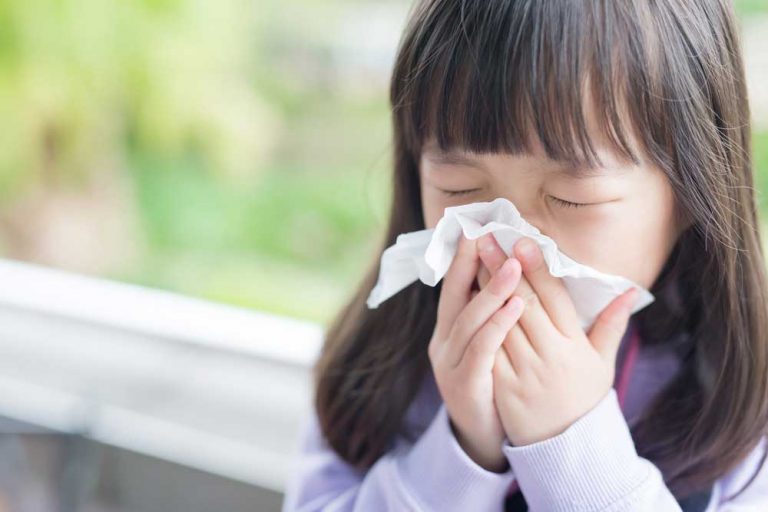Allergies in Children and What Parents need to Know
Allergy is caused when the body’s immune system reacts to a normally harmless substance such as food, pollen or house dust mites. The body recognizes the substance as a threat and mounts an exaggerated and inappropriate response to it.
Written By
Dr. Nirajan Mukherjee
Published on
May 31, 2022

Author
What is an Allergy?
Allergies and Genetics
Which are the Common Food Allergens?
Symptoms of Allergic Reactions
What do I do if I suspect my child is having an Allergic Reaction?
Is there a Cure for Food Allergies?
Author
Dr. Nirajan Mukherjee
Dr. Nirajan Mukherjee MBBS, DCH, CCT(UK), FRCPCH, PG Cert Allergy(UK). Author is a UK trained Consultant pediatrician with an interest in Allergy.He has wide experience of treating children's with allergies both in the UK and UAE.He has been working in the UAE since 2015 and is currently working as Consultant at Mediclinic Al Noor Hospital, Abudhabi
Dr. Nirajan Mukherjee MBBS, DCH, CCT(UK), FRCPCH, PG Cert Allergy(UK). Author is a UK trained Consultant pediatrician with an interest in Allergy.He has wide experience of treating children's with allergies both in the UK and UAE.He has been working in the UAE since 2015 and is currently working as Consultant at Mediclinic Al Noor Hospital, Abudhabi
What is an Allergy?
Allergy is caused when the body’s immune system reacts to a normally harmless substance such as food, pollen or house dust mites. The body recognizes the substance as a threat and mounts an exaggerated and inappropriate response to it.
The different forms of allergy include Food Allergy, Allergic Rhinitis, Asthma and Atopic Dermatitis ( Eczema ). An allergic individual may have one or more conditions at any given time. Our discussion will be centered more around food allergies which can potentially have life threatening implications. Allergies can start as early as in the first 3 months of life but very rarely at birth. Some allergies do not persist over a lifetime and patients may grow out of their allergic disease spontaneously.
Food allergies are of particular concern in infants and toddlers with the incidence of food allergies estimated to be about 5-8 % as compared to adults (1-2 %).
Allergies and Genetics
Children born into families with allergies have a higher than average chance of developing allergies themselves. If both parents have allergies, the risk is increased further. Allergies also occur in children without their parents or siblings having any known allergic disease.
Which are the Common Food Allergens?
Common food allergens include cow’s milk, egg, soy, wheat, peanuts, tree nuts, fish and shellfish. Cow’s milk and eggs and the commonest allergies seen in infants and toddlers but most children will grow out of them. Peanut, tree nut, fish and shellfish allergies tend to last longer, and in many individuals for a lifetime.
Symptoms of Allergic Reactions
The symptoms could be as mild as some spots around the mouth to as severe as difficulty in breathing and collapse. A severe allergic reaction is termed as anaphylaxis. An anaphylactic reaction needs treatment with a life-saving medicine called adrenaline / epinephrine and a period of observation in the hospital.
Skin rashes, hives and itching, Swelling of the face and the lips, Sneezing , runny nose, itchy or watery eyes, Itching and tingling in the mouth, Nausea, Vomiting and Abdominal Pain, Hoarse voice, difficulty in breathing, wheezing, continuous coughing, Agitation, drowsiness, collapse
Any of the above symptoms may occur in isolation or in combination in an allergic reaction.
What do I do if I suspect my child is having an Allergic Reaction?
Educating your child about his/her condition: It is important that the child understands the need to avoid the allergic substances and what to do if they have a reaction. This is best done over time.
Educating family, friends and carers: It is important that anyone caring for your child understands about the allergies and how treatments are given.
Notifying school: Class teacher should be aware of your child’s allergies. The School Nurse should be having an emergency plan for allergic reactions your child might experience.
Food Labels: Read food labels for ingredients a child is allergic to. Teach your child as well about what to look for in the labels.
Eating Out: Ask the restaurant whether they would be able to prepare an allergen free meal for your child. Always ask for ingredients and never assume that a particular dish does not have the allergen simply because it was safe to eat in another place.
Is there a Cure for Food Allergies?
Immunotherapy is a preventive treatment for allergic reactions to substances such as grass pollens, house dust mites and bee venom. Immunotherapy involves giving gradually increasing doses of the substance, or allergen, to which the person is allergic. This is given as shots or as tablet / drops given orally. It has been an effective preventive therapy. A lot of research is going on all around the world to develop a similar therapy for food allergies and we hope there will be a breakthrough in the next few years.
